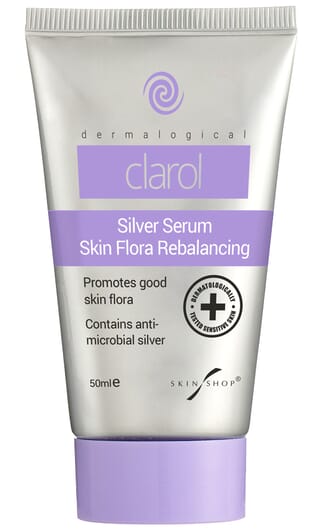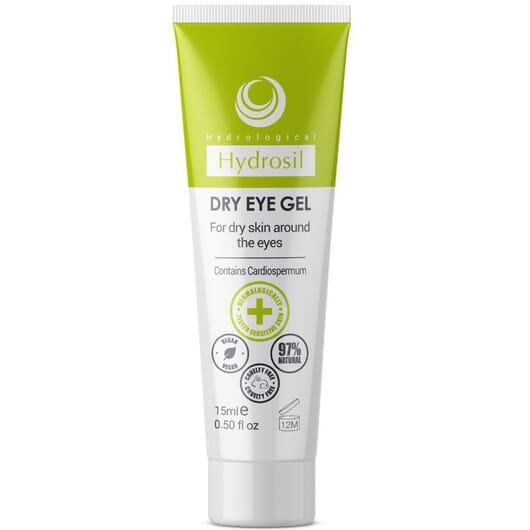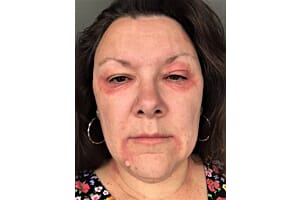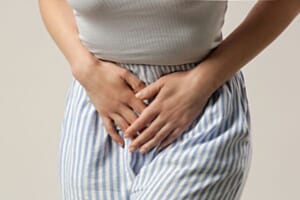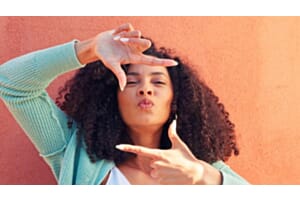Skin conditions such as eczema, rosacea and adult acne are often due to an underlying predisposition to them, however there are some things that can make them worse or trigger more frequent flare ups or break outs and one of those is make up.
Here three skin experts who suffer from common skin conditions themselves, give their advice on how make up can trigger flare ups and break outs and their advice on how to reduce the risk of this happening while still being able to wear makeup.
Make up triggered Eye Eczema & Blepharitis
Professional Make-Up Artist & tutor at The London School of Beauty & Make Up, Helen Andrews says:
'Eye eczema triggered by make up is becoming more and more common and usually appears on the eye lids which become swollen, red and itchy. I am seeing more of this skin issue in people in their 40’s who have been wearing daily make up for most of their adult life, eventually the skin becomes weaker with age (especially in perimenopause) and more intolerant of chemicals in make up. I myself have developed this skin condition as a result of wearing make up daily for my job for all my adult life.

Eye shadows are the main trigger for this condition as well as mascara, but there are steps you to minimise the risk of triggered eye eczema or blepharitis.
The other big issue with eye eczema is that you can’t apply normal steroid cream that you would use for eczema elsewhere on the body because the skin around the eyes is too thin. So there are limited treatments available for this.
However, last year I discovered an amazing product to treat my own eye eczema called Hydrosil Dry Eye Gel, which I wear daily under all eye make up. It reduces inflammation and itching and protects the skin around the eye from reactions to eye cosmetics and works perfectly as a primer. This product has been a game changer for me as it allows me to still wear make up while reducing the irritation and itching around my eyes! Just make sure you allow 5-10 minutes for the eye gel to really absorb into the skin before applying your make up, this will maximise the benefits without moving the gel when applying make up on top.
There are also some other preventive habits you can get into to avoid eye eczema flares from your make up.
A lot of powder eyeshadows can contain talc, which is a known irritant so I would opt for a cream-based eyeshadow to help reduce the risk of irritation.
Be very careful what make up remover you choose as most contain detergents that can cause damage and irritation to the skin around the eyes and leave them dry and flaky.
I love using natural raw organic coconut oil, it’s safe on the skin, naturally antibacterial and is great at breaking down the products on your skin. I melt a small amount in my hands and massage gently into the skin paying attention to the lash area too, then rinse away with lukewarm water and continue with my cleansing routine (oils can clog the pores so it is important to use a hypoallergenic cleansing wash afterwards). The idea is to avoid any harsh rubbing or pulling on the skin or lashes which can cause friction on irritated skin. Oh and be sure to store the coconut oil in a cool place to maintain its solid formula.
Clean your lashes daily. Make up is sticky and picks up a lot of dirt throughout the day. Cleaning the root of your lashes twice a day with diluted baby shampoo can hugely help keep eye eczema flares under control. Dip a cotton bud into the solution and run it along the lash line (top and bottom). This really helps to remove the build-up of bacteria that begins to form on the lashes and can trigger an eye eczema fare. I use one end of a clean cotton bud for each lash line to avoid cross contamination.'
Make up triggered Acne
Professional Make-Up Artist and Owner at Buff Makeup Artistry Jo Crossley says;
Acne triggered by make up is becoming more and more common, especially with the current trend for contouring which requires a lot of layering of foundations and powders, which can clog pores with greasy substances.
Heavy foundations and contouring products also attract a lot of dirt from the environment that sticks to the products and ends up breeding and multiplying on the surface of the skin.

So you end up with a perfect storm for acne, a combination of congested pores and then multiplying bacteria in the make up sat on the skin's surface.
The problem is a lot of acne products dry out the skin and applying make up to dry flaky skin is a nightmare as it quickly crusts and flakes.
A few years ago I discovered a brilliant product called Clarol Silver Serum which I not only use for myself to prevent my own adult acne, but which I recommend to all my clients who are prone to acne and especially my brides as it’s the perfect preventative for make-up triggered acne to avoid an acne breakout on their big day.
You can comfortably wear Silver Serum under make up as its light and non sticky. It sits under make up working away to kill of the bad bacteria building up in the make up but also crucially also feeds good skin bacteria in the skin pore which keeps the pore from getting infected and keeps the skin hydrated and supple. So its a super effective ssolution for prevening acne breaks out troggered by make up is great when you need results - FAST! I’ve been told that some of my clients have applied the serum 1-2 times a day under their make up, without any dryness or sensitivity, and they have been overjoyed by how quickly their skin cleared.'
Make up triggered Rosacea
Consultant dermatologist Dr Eva Melegh says;
'Rosacea is a complex inflammatory skin condition that results in multiple symptoms including increased sensitivity, redness, dryness and tightness and is sometimes also accompanied by small pustules.
One of the biggest triggers of rosacea are chemical irritants is cosmetics. Often a reaction to a cosmetic will be the first trigger point for developing rosacea.

Once rosacea is triggered it often comes back with increasing intensity and frequency with the ski become more and more sensitive with each flare. Age makes rosacea more likely so a combination of years of use of chemical cosmetics combined with age makes rosacea most common in women aged 45 onwards.
I suffer from rosacea myself and I believe that consciously targeted no chemical skin-care routines are essential for managing it.
It's crucial when trying to prevent and control rosacea to find products that actively reduce the sensitivity and redness of the skin, contain a mineral sun sun block, contain a very low chemical load and only use foundations and concealers that are designed for skin prone to rosacea.
I found that Kalme Skincare is an excellent solution for controlling and reducing rosacea flares and for wearing under cosmetics. It contains multiple specialised ingredients to treat and control the various symptoms of rosacea. It includes skinasensyl, which is a special tetrapeptide which reduces the skin’s sensitivity, an anti-redness ingredients that utilises a special extraction technology from young caper buds that reduces redness, a 24 hour moisturising ingredient, antioxidants to reduce inflammation, a pure zinc mineral SPF and a tone-matching concealer with many of these ingredients in it.
Kalme products treat rosacea with a unique mechanism of actions: increasing skin tolerance threshold, reducing underlying inflammation and redness and ensuring optimal UV protection as well as offering cosmetic camouflage of uneven and red skin tone.
Aside from being very careful what skincare and cosmetic products you use, avoid putting your face in direct sunlight, turn the heating down at night to as low as possible, cover exposed facial skin in cold weather, avoid fizzy alcoholic drinks and spicey food and reduce using water to clean your face as much as possible are a few habits that can also help reduce the frequency and intensity of rosacea flares.'




